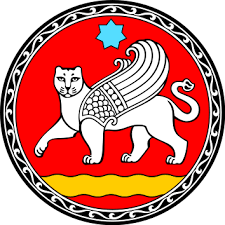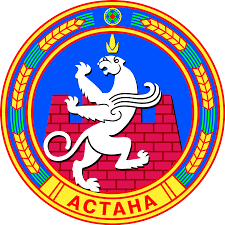
Scientific Name: Panthera uncia
Habitat: the mountain ranges of Central and South Asia.
IUCN Red List: Vulnerable
Global Population: less than 10,000 mature individuals
Threats: It is threatened by poaching and habitat destruction following
infrastructural developments.
Weight: Maximum weight is 75kg.
Length: Maximum length is 2.5m.
Description: The snow leopard's fur is whitish to gray with black spots on
head and neck, but larger rosettes on the back, flanks and bushy tail.
The belly is whitish. Its eyes are pale green or grey in colour. Its muzzle
is short and its forehead domed. Its nasal cavities are large. The fur is
thick with hairs between 5 and 12 cm (2.0 and 4.7 in) long. Its body is
stocky, short-legged, and slightly smaller than the other cats of the
genus Panthera. The snow leopard shows several adaptations for living
in a cold, mountainous environment. Its small rounded ears help to
minimize heat loss. Its broad paws well distribute the body weight for
walking on snow, and have fur on their undersides to increase the grip
on steep and unstable surfaces. It also helps to minimize heat loss. Its
long and flexible tail helps to maintain balance in the rocky terrain. The
tail is also very thick due to fat storage, and is covered in a thick layer of
fur, which allows the cat to use it like a blanket to protect its face when
asleep.
Trophic Level: Carnivore
Diet: It eats carrion. Its preferred wild prey species are Himalayan Blue
Sheep (Pseudois Nayaur), Himalayan Tahr (Hemitragus Jemlahicus),
Argali (Ovis Ammon), Markhor (Capra Falconeri) and Wild Goat
(C.Aegagrus). It also preys on domestic livestock. In the Karakoram,
Tian Shan, Altai and Mongolia’s Tost Mountains, it’s main prey consists
of Siberian Ibex, Thorold’s Deer (Cervus Albirostris), Siberian Roe Deer
(Capreolus Pygargus) and Argali. Other species hunted when available
include Red Panda, Wild Boar, Langur Monkey, Snow cock and Chukar
partridge.
- The Snow Leopard is also called the Ounce.
- The snow leopard's vocalizations include meowing,
grunting, prusten, and moaning. - It can purr when exhaling.
- It cannot roar, despite possessing partial ossification of the hyoid
bone. - This partial ossification was previously thought to be essential for
allowing the Panthera cats to roar, but new studies show that the
ability to roar is due to other morphological features. - The larynx are absent in the snow leopard.
- Snow leopards are solitary animals.
- They are active mostly at dawn until early morning, and again in
afternoons and early evenings. - Like other cats, snow leopards use scent marks to indicate their
territories and common travel routes. - These are most commonly produced by scraping the ground with
the hind feet before depositing urine or scat, but they also spray
urine onto sheltered patches of rock. - Urine of snow leopards contains many characteristic low molecular
weight compounds with diverse functional groups such as
pentanol, hexanol, heptanol, 3-octane, nonanal, indole, etc. which
might play a role in chemical communication. - The snow leopard is a carnivore and actively hunts its prey.
- It is an opportunistic hunter.
- Paired snow leopards mate in the usual felid posture, from 12 to
36 times a day. - Females with her cubs usually stay together, and they rear them in
dens in the mountains for extended periods.

- Snow leopards become sexually mature at two to three years, and
normally live for 15–18 years in the wild. - In captivity they can live for up to 25 years.
- They usually mate in late winter, marked by a noticeable increase
in marking and calling. - Females have a gestation of 90–100 days, and the cubs are born
between April and June. - A litter usually consists of two to three cubs, in exceptional cases
also up to seven. - The female gives birth in a rocky den or crevice lined with fur shed
from her underside. - The cubs are blind and helpless at birth, although already with a
thick coat of fur, and weigh from 320 to 567 g (11.3 to 20.0 oz). - Their eyes open at around seven days, and the cubs can walk at
five weeks and are fully weaned by 10 weeks. - The cubs leave the den when they are around two to four months
of age, but remain with their mother until they become independent
after around 18–22 months. - Once independent, they disperse over considerable distances,
even crossing wide expanses of flat terrain to seek out new
hunting grounds. - The major threat to snow leopard populations is poaching and
illegal trade of skins and body parts.

- In China, 103 to 236 animals are poached every year, in Mongolia
between 34 and 53, in Pakistan between 23 and 53, in India from
21 to 45, and in Tajikistan 20 to 25. - Poaching is linked to prey declines and livestock depredation.
- In 2008, there were approximately 600 snow leopards in zoos
around the world. - In the Richmond Metropolitan Zoo in Virginia, in the United States
of America, snow leopard cubs were born in 2016. - Snow leopard attacks on humans are rare; only two instances are
known. - On July 12, 1940, in Maloalmaatinsk gorge near Almaty, a rabid
snow leopard attacked two men during the day and inflicted
serious injuries on both. - In the second case, not far from Almaty, an old, toothless,
emaciated snow leopard unsuccessfully attacked a passer-by in
winter; it was captured and carried to a local village. - There are no other records of any snow leopard attacking a human
being. - The snow leopard is the “state animal” of Himachal Pradesh, India.
- It has also been declared the “national animal” of Pakistan.
- The snow leopard in heraldry is sometimes known in English as
the ounce. - The cat has long been used as a political symbol, the Aq
Bars ('White Leopard'), by Tatars, Kazakhs, and Bulgars. - A snow leopard is found on the official seal of the city of Almaty,
Kazakhstan.






- A mythical winged Aq Bars is found in the national coat of arms of
Tatarstan, the seal of the city of Samarqand, Uzbekistan, and (also
with a crown) the old coat of arms of the Kazakh capital, Nur-
Sultan. - In Kyrgyzstan, it has been used in highly stylized form in the
modern emblem of the capital, Bishkek, and the same art has
been integrated into the badge of the Kyrgyzstan Girls Scouts
Association. - A crowned snow leopard features in the arms of Shushensky
District, Krasnoyarsk Krai , Russia. - The BBC One TV series Planet Earth had a segment on snowleopards. The series took some of the first video of snow leopards in the wild, and also featured a snow leopard hunting a Markhor.
- The episode "Mountains" of Planet Earth II, aired in November
2016, featured the rather violent mating fights of snow leopards, as
well as a snow leopard's chuffing and wailing. - A snow leopard named Dawa along with her cubs is one of the
focal points of the 2017 Disneynature film Born in China.


- In Philip Pullman's 1995–2000 fantasy trilogy His Dark Materials,
Lord Asriel's demon is a snow leopard named Stelmaria. - Tai Lung, the main antagonist of the 2008 film Kung Fu Panda, is
an anthropomorphized snow leopard.


- In the 2013 film The Secret Life of Walter Mitty, photojournalist
Sean O'Connell, played by Sean Penn, is shown photographing
snow leopards in Afghanistan. - Chak'ku, a snow leopard, is one the main characters in the
Pakistani animated film Allahyar and the Legend of Markhor. - It aims to shed light on the preservation and poaching of snowleopards.
Meanings
Carrion – The decaying flesh of dead animals, including human flesh.
Pentanol – It is an alcohol with five carbon atoms. Pentanol is a
colourless liquid with a distinctive aroma.
Hexanol – Hexanol is an organic alcohol with a six-carbon chain. This
colourless liquid is slightly soluble in water, but miscible with diethyl
ether and ethanol.
Heptanol – Heptanol is an alcohol with a seven carbon chain. It is a clear
colourless liquid that is very slightly soluble in water, but miscible
with ether and ethanol.
3-octane – Octane is a component of gasoline (petrol). As with all low-
molecular-weight hydrocarbons, octane is volatile and very flammable.
Nonanal – This is a colourless, oily liquid, nonanal is a component of
perfumes. Nonanal has been identified as a compound that
attracts Culex mosquitoes.
Indole – Indole is solid at room temperature. It occurs naturally in
human faeces and has an intense faecal odour.